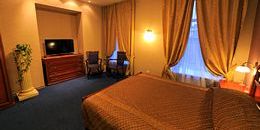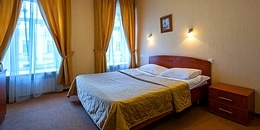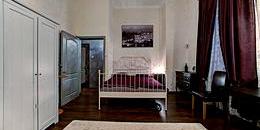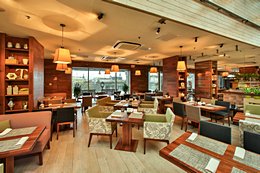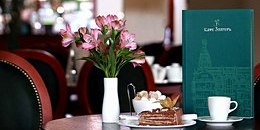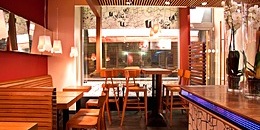Malaya Konyushennaya Ulitsa (Little Stable Street)
Malaya Konyushennaya Ulitsa is one of the most beautiful pedestrian streets in all of Russia. It is well worth exploring to admire the elegant Evangelical Lutheran Church of St. Catherine ("the Swedish Church"), a bronze monument to the writer Nikolai Gogol, and an old meteorological pavilion, and then to pay a visit to the Mikhail Zoshchenko Memorial Museum-Apartment here.

Malaya Konnushennaya appeared in the 1730s at the same time as Bolshaya Konnushennaya Ulitsa (Big Stables Street) and was originally called Rozhdestvenskaya Ulitsa (Christmas Street). The majority of its population in the middle of the 18th century were Lutheran Swedes, and this community built the wooden Church of St. Catherine. One hundred years later, architect Carl Anderson erected a Romanesque style stone church in its place that has been preserved to the present day. In 1905, architect Fyodor Lidval reconstructed the facade of the church and created the Art Nouveau Catherine Hall, a concert hall, next to it. During the Soviet times the church was closed and used for sports activities. It was returned to the church in 1991 following the collapse of the Soviet Union.
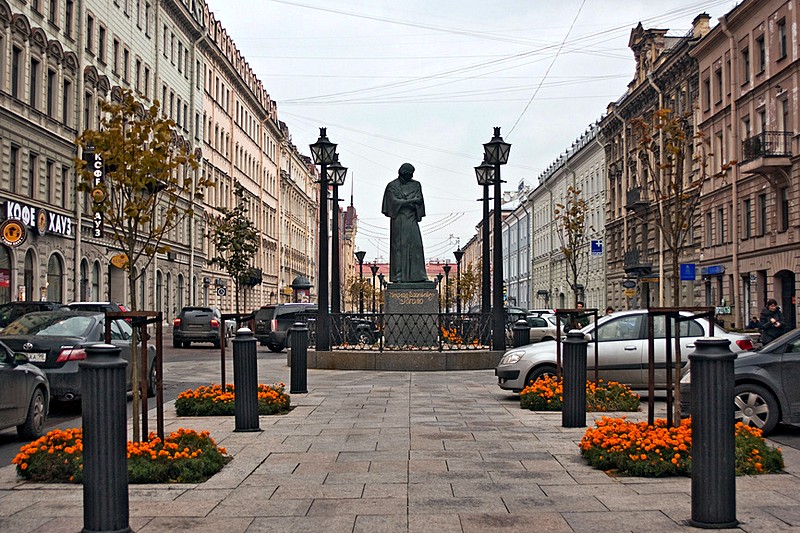
House No. 5 was built for the German School at St. Peter's Church (Petrischule). In the 1980s, the Russian rock star and poet Boris Grebenshikov lived in this house, and thus explains the abundance of graffiti on the walls. The Petrischule is one of the oldest educational institutes in Russia, founded in 1709. Writers Vyacheslav Shishkov, Olga Forsch, and Michael Zoshchenko; poet Vsevolod Rozhdestvensky; and playwright Evgeniy Schwartz all lived in the former Imperial Stables Department residential building (No. 4) at various times. The Zoshchenko Memorial Museum is here currently. In 1913, at the exit to Nevsky Prospekt a meteorological pavilion was installed which was later transferred to the Elagin Island.

After the October Revolution, Malaya Konyushennaya Ulitsa was renamed Sofia Perovskaya Ulitsa after one of the Russian terrorists who assassinated Tsar Alexander II. In the early 1990s, its former name was restored. In 1996, it was decided to make Malaya Konyushennaya Ulitsa into the city's first pedestrian precinct. Cobblestones and slabs of granite were laid instead of asphalt, trees and flowerbeds were planted, and benches were installed. A monument to the Tsarist "Gorodovoy" (city policeman) was erected in 1998 on the corner with the Shvedskiy Pereulok in front of the Swedish Consulate. A monument to Nikolay Gogol also stands at the beginning of the street at the intersection of Nevsky Prospekt, erected in 1997. The meteorlogical pavilion has since returned to Malaya Konyushennaya and as before, shows the time, barometric pressure, and air temperature. The Catherine Hall is currently used as the Palace of Youth Culture.

Almost immediately after its transformation into a pedestrian area in the 1990's, Malaya Konyushennya Ulitsa became a favorite place for walks and a refuge from the noise and crowds of Nevsky Prospekt.
| Metro stations: | Nevsky Prospekt / Gostiny Dvor |
|---|---|
| Directions: | Exit either metro station onto the Griboedov Canal, cross the canal and continue along Nevsky Prospekt to the second turning on the right. |
| Best walking route: | The whole street (about 20 minutes) |
| What's here? | Swedish Church of St. Catherine, Monument to Gogol, Monument to the St. Petersburg Policeman, Mikhail Zoschenko Memorial Museum |
| What's nearby? | Nevsky Prospekt, Bolshaya Konnushennaya Ulitsa (Big Stables Street), Naberezhnaya Kanala Griboedova (Griboedov Canal Embankment), St. Peter's Lutheran Church, Petrischule (St. Peter's German School), Kazan Cathedral |

